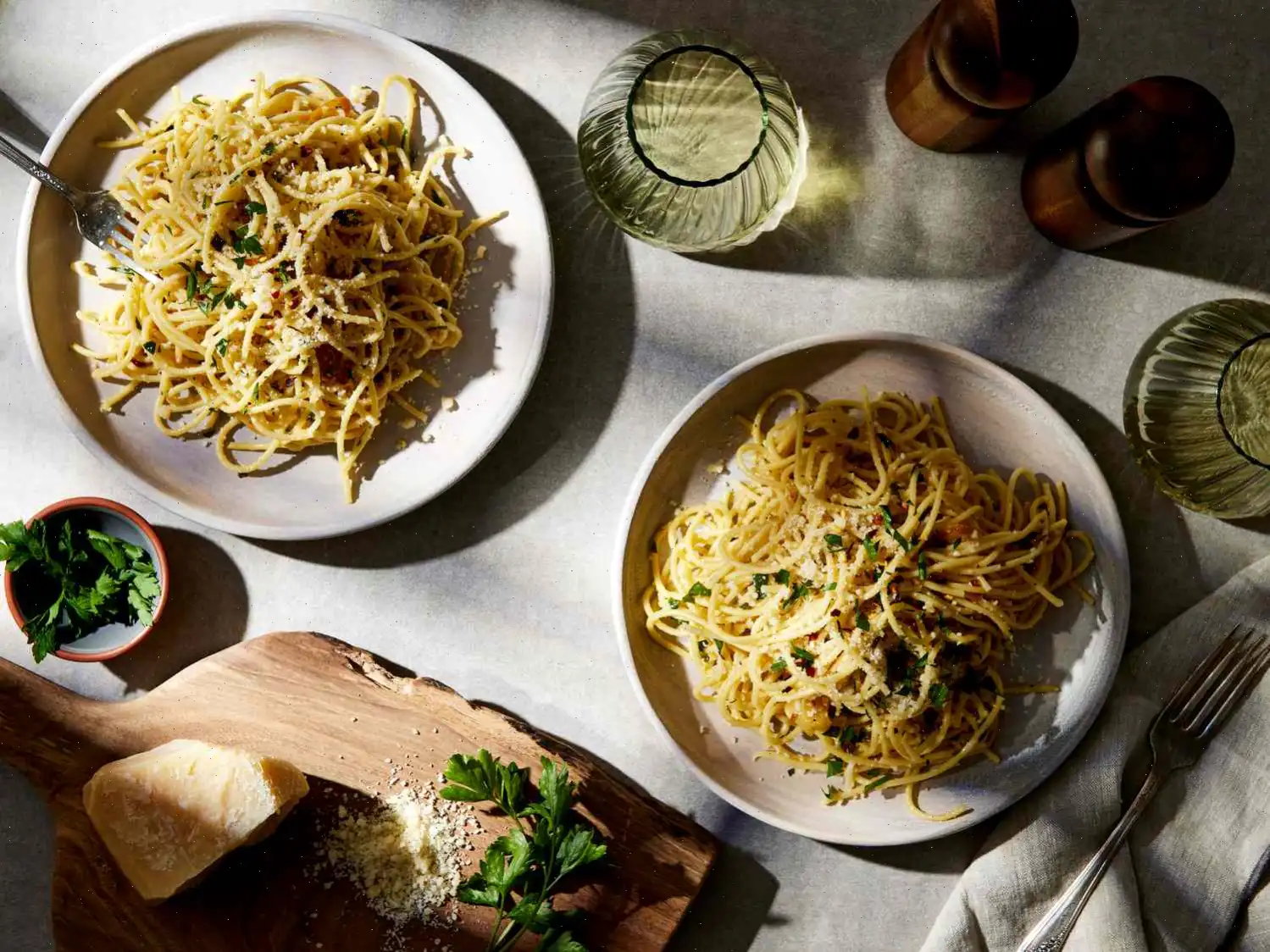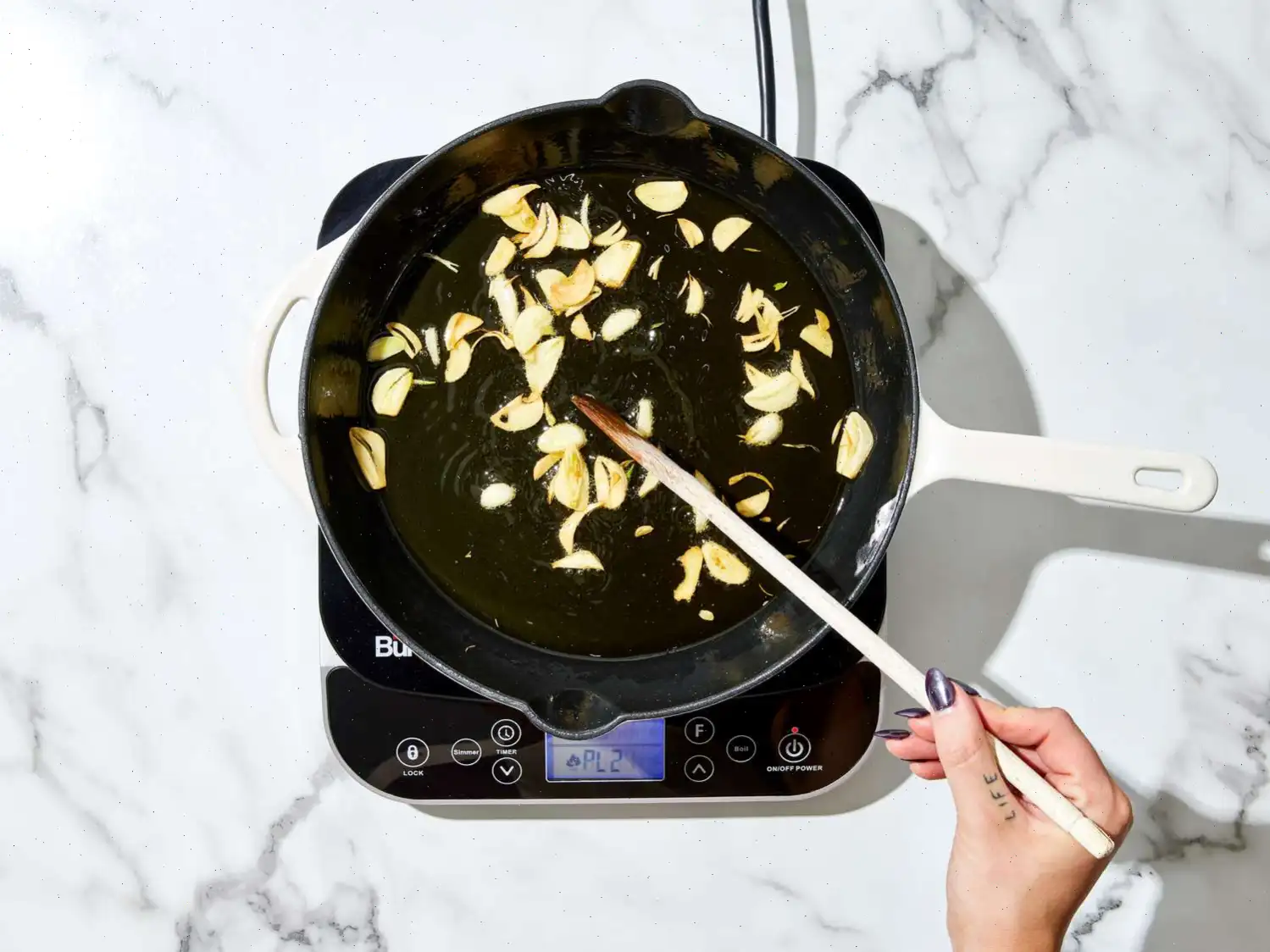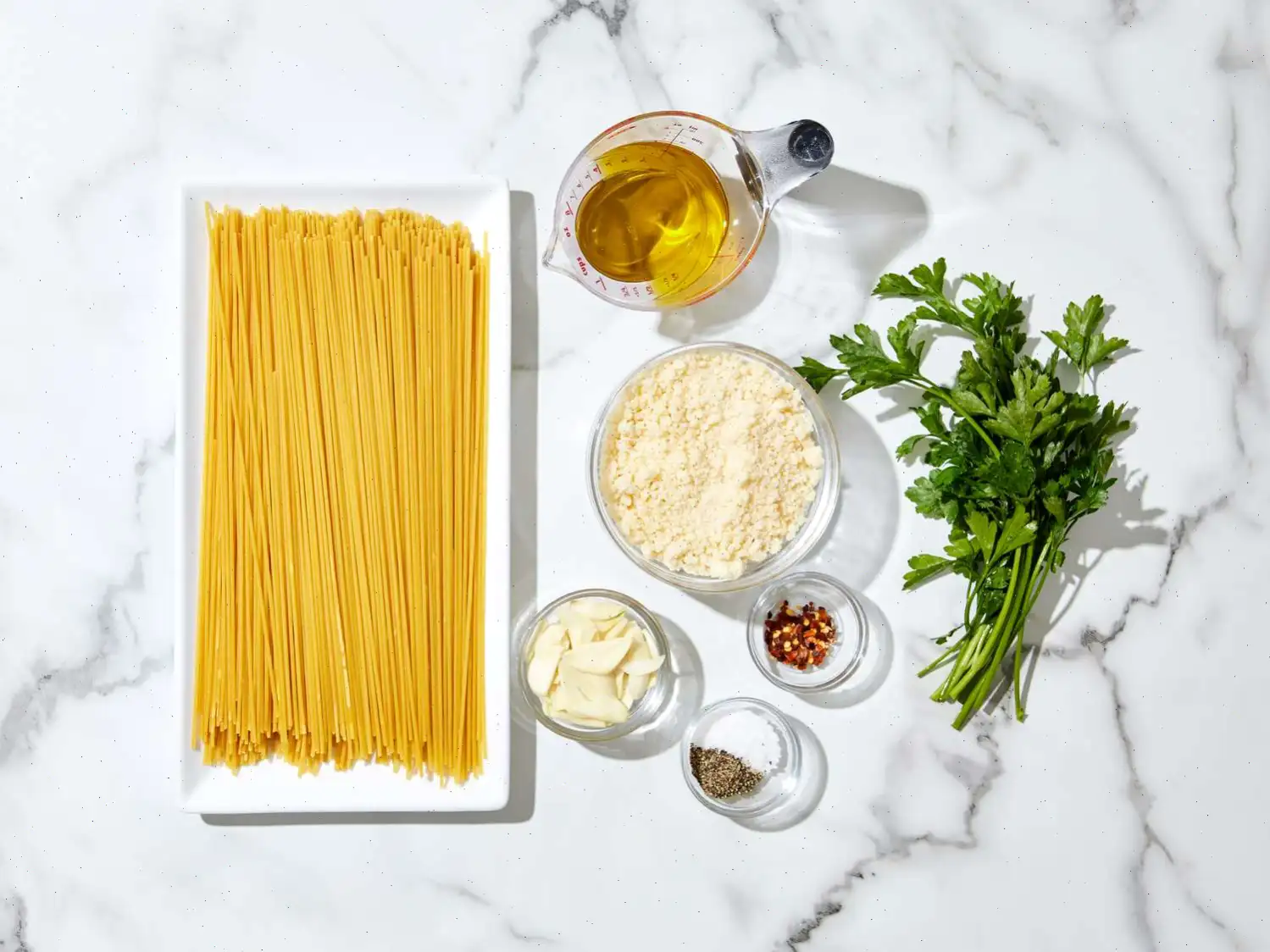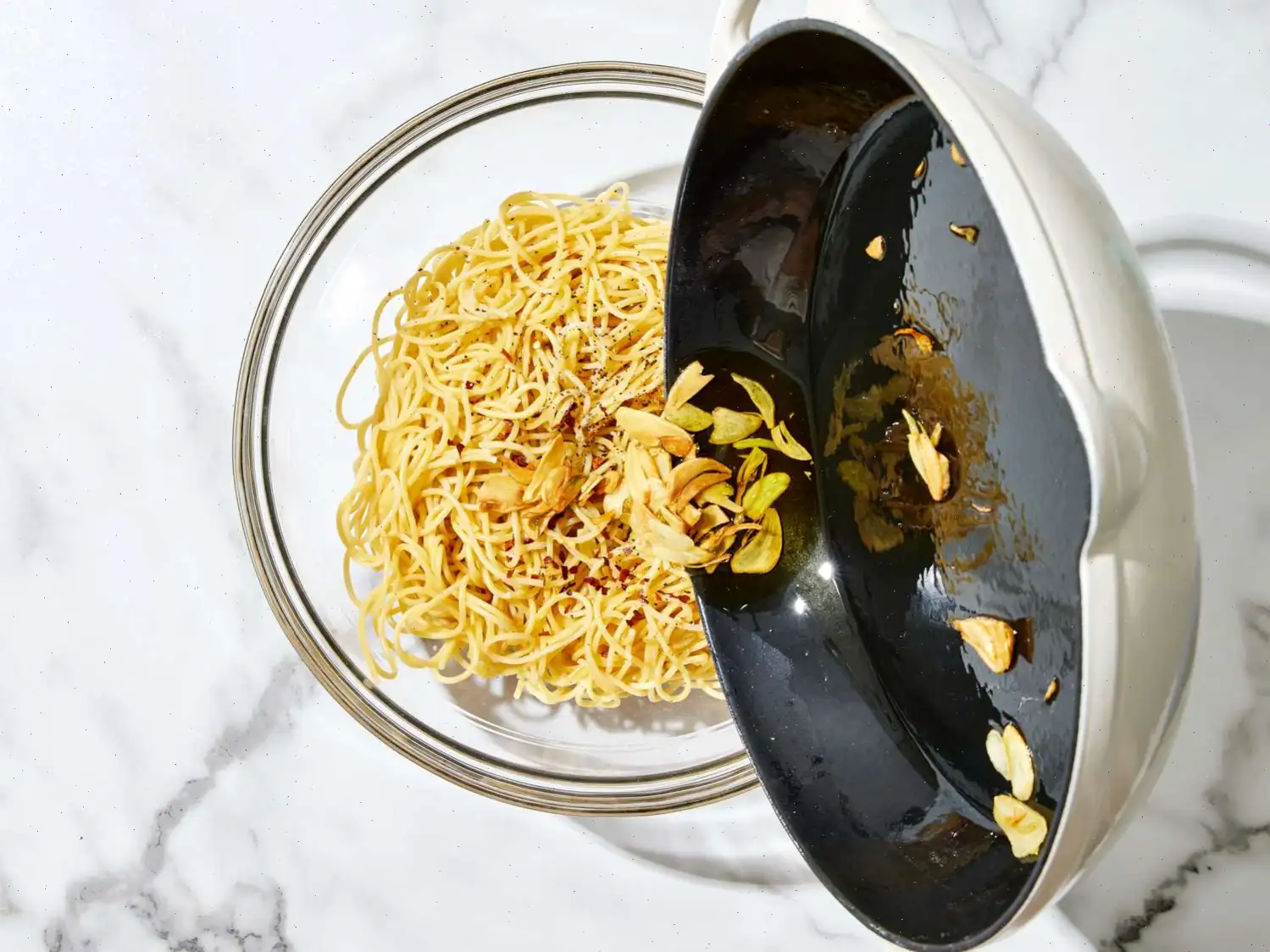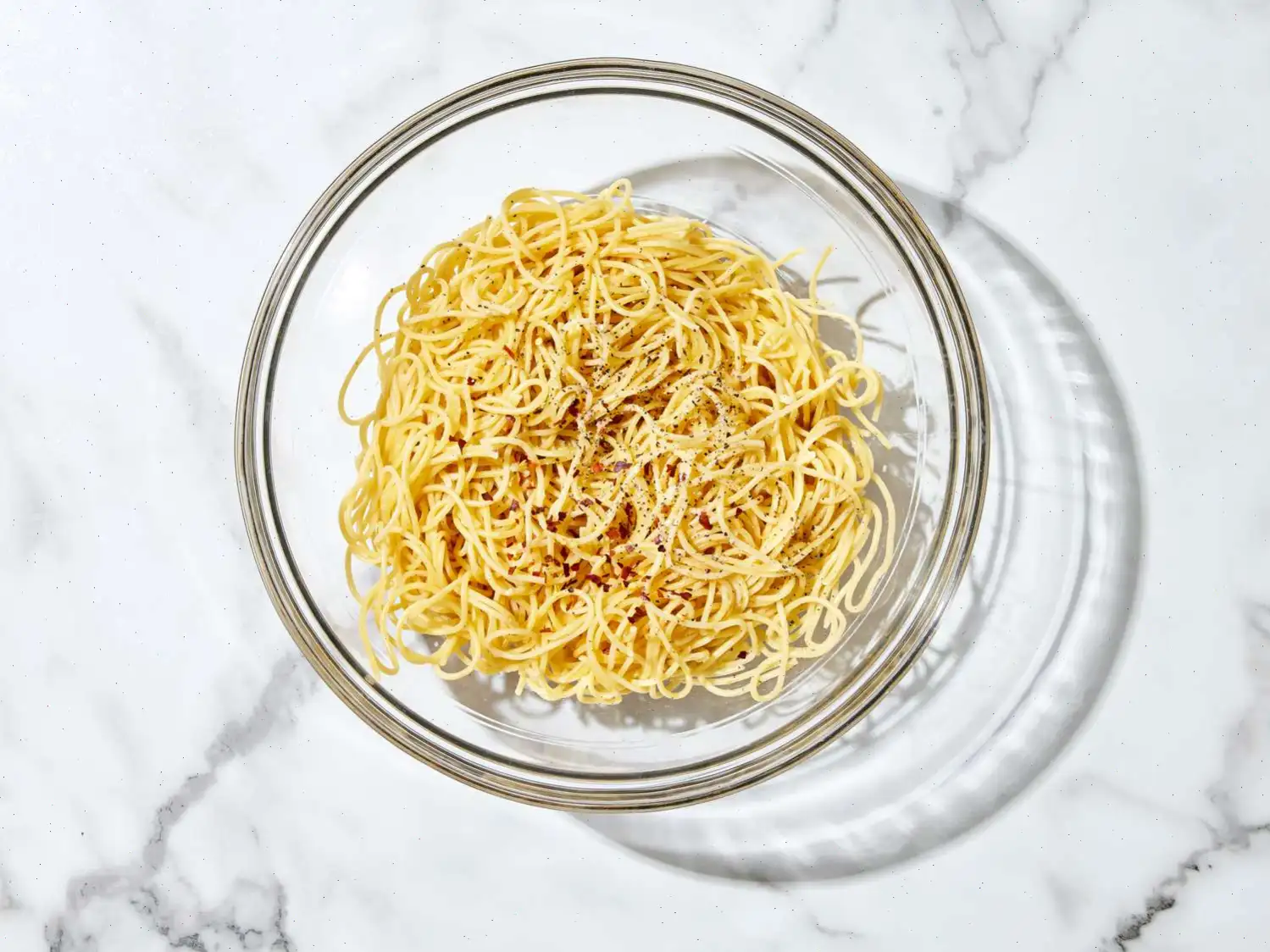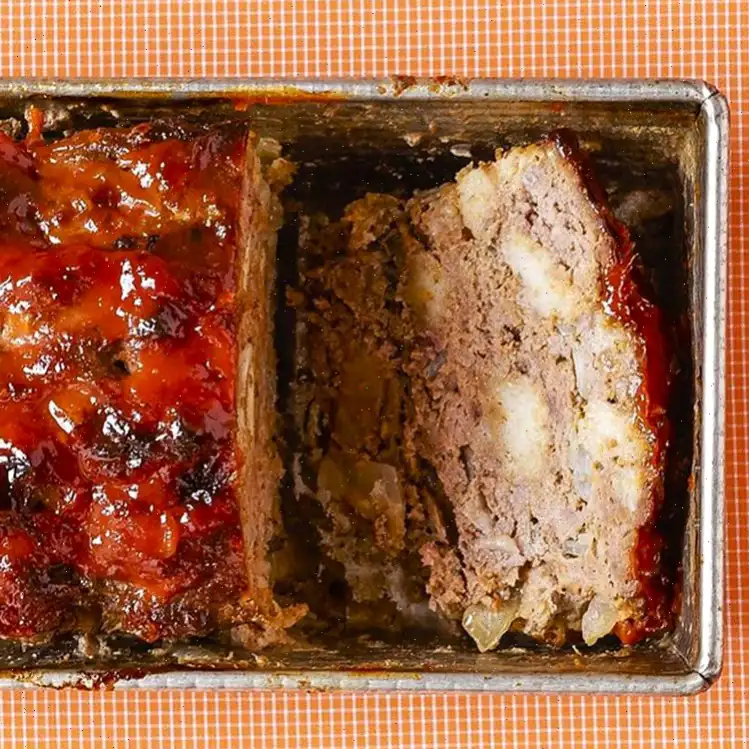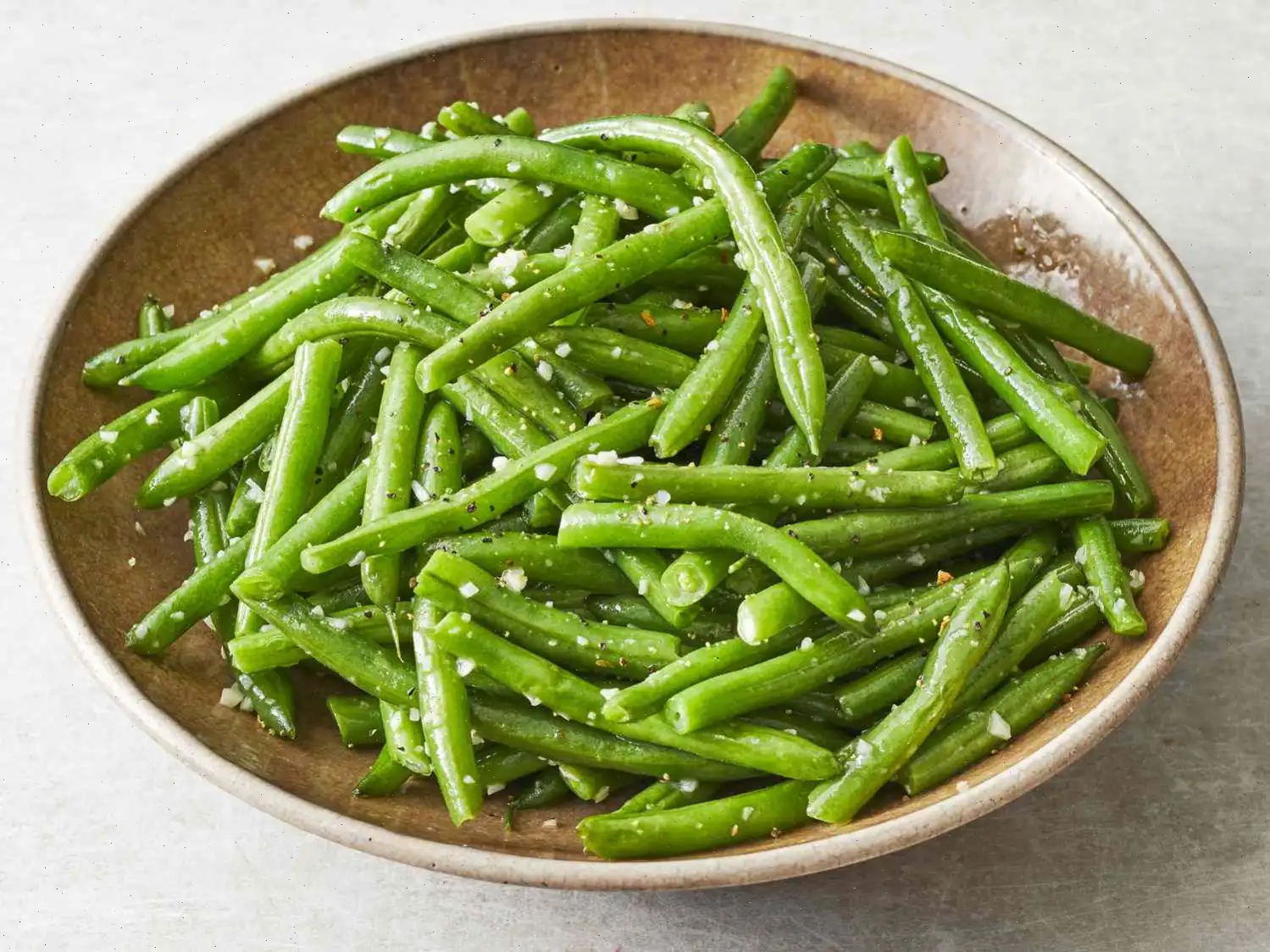
Spaghetti Aglio e Olio Recipe
Ingredients
- 1 pound uncooked spaghetti
- cup olive oil
- 6 cloves garlic, thinly sliced
- teaspoon red pepper flakes, or to taste
- Salt and freshly ground black pepper, to taste
- cup chopped fresh Italian parsley
- 1 cup finely grated Parmigiano-Reggiano cheese
Directions
Step 1: Gather all ingredients.
Step 2: Bring a large pot of lightly salted water to a boil. Add the spaghetti and cook, stirring occasionally, for about 10 to 12 minutes, or until al dente. Drain the pasta and transfer it to a pasta bowl.
Step 3: While the pasta is cooking, heat a cold skillet over medium heat and combine the olive oil and garlic. Slowly toast the garlic, stirring occasionally, for about 10 minutes. When the olive oil starts to bubble, reduce the heat to medium-low and continue cooking until the garlic turns golden brown, about 5 more minutes. Remove from heat.
Step 4: Stir in the red pepper flakes, salt, and freshly ground black pepper into the drained pasta.
Step 5: Pour the hot olive oil and garlic mixture over the pasta. Sprinkle with chopped parsley and half of the Parmigiano-Reggiano cheese. Toss well to combine.
Step 6: Serve the pasta topped with the remaining Parmigiano-Reggiano cheese.
Recipe Tip
For extra richness, add 1 tablespoon of butter when tossing the pasta with cheese. Its not traditional, but it adds a creamy depth to the dish.
Nutrition Facts (per serving)
| Calories | 755 |
| Total Fat | 35g |
| Saturated Fat | 8g |
| Cholesterol | 18mg |
| Sodium | 355mg |
| Total Carbohydrate | 87g |
| Dietary Fiber | 4g |
| Total Sugars | 3g |
| Protein | 23g |
| Vitamin C | 7mg |
| Calcium | 260mg |
| Iron | 4mg |
| Potassium | 321mg |
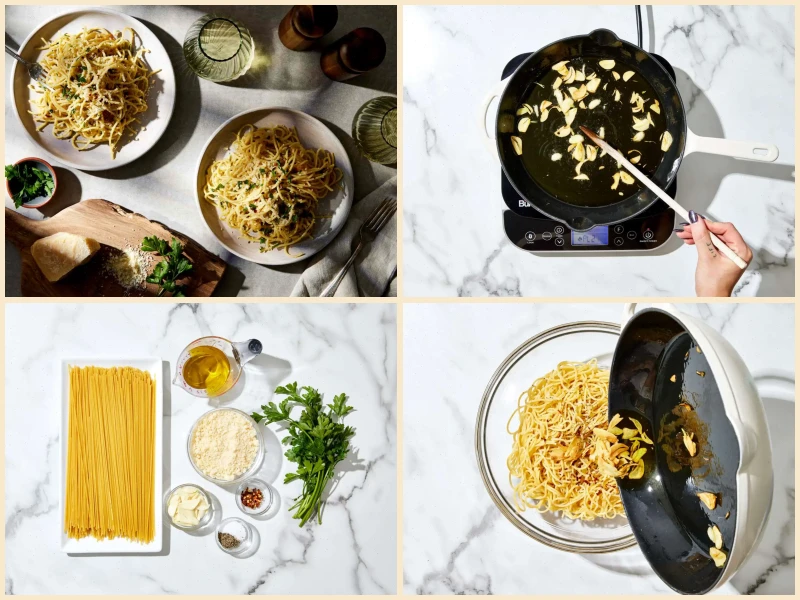

Spaghetti Aglio e Olio is a quintessential Italian pasta dish known for its simplicity and rich flavors. The dish consists of just a few ingredients: spaghetti, olive oil, garlic, red pepper flakes, and Parmesan cheese. Despite its straightforwardness, Spaghetti Aglio e Olio is a flavorful comfort food loved by many around the world.
History and Origins
Spaghetti Aglio e Olio has roots in the southern regions of Italy, particularly Naples. The name itself translates to "spaghetti with garlic and oil" in Italian, which reflects the core ingredients of the dish. This dish is a perfect example of the Italian philosophy of "cucina povera," or "poor cooking," which emphasizes simple, inexpensive ingredients prepared in a flavorful and satisfying way. It is said that the dish originated as a quick meal for fishermen and workers, who needed something filling and easy to prepare using minimal ingredients.
Regional Variations
While the basic recipe remains the same, there are regional variations of Spaghetti Aglio e Olio. In Naples, for example, the dish might be prepared with extra virgin olive oil, garlic, and red pepper flakes for a spicier kick. Some versions may include additional ingredients like anchovies, parsley, or even lemon zest to add extra layers of flavor. Despite these variations, the essence of Spaghetti Aglio e Olio remains unchanged a simple yet satisfying pasta dish that highlights the quality of the ingredients.
What Sets It Apart
Compared to other pasta dishes, Spaghetti Aglio e Olio stands out due to its minimalistic approach. Unlike rich sauces like Bolognese or Carbonara, Aglio e Olio is based on the beauty of simple ingredients, relying on the depth of flavor that garlic and olive oil bring. The dish is also much lighter than its cream-based counterparts, making it an ideal choice for those looking for a quick, flavorful meal without the heaviness of a traditional Italian sauce. Additionally, the use of red pepper flakes adds a mild heat, which balances the richness of the olive oil and the garlic's sweetness.
Where It's Usually Served
Spaghetti Aglio e Olio is commonly served as a main course in many Italian restaurants, particularly in the south of Italy. Its often enjoyed as a late-night snack or a quick meal, especially after a long day. Given its simplicity and quick preparation, it's a popular dish among students and professionals who want a meal that is both satisfying and easy to make. You might also find it served in casual Italian eateries around the world, often paired with a glass of wine to complement the bold flavors of the garlic and olive oil.
Interesting Facts
- Spaghetti Aglio e Olio was originally considered a "poor man's dish" due to its low-cost ingredients.
- Its said that the key to making this dish truly special is the way the garlic is cooked it should be slowly toasted to bring out its sweetness without becoming bitter.
- In some regions, Aglio e Olio is also made with the addition of anchovies, which melt into the olive oil to add a savory depth to the flavor.
- The dish is incredibly versatile and can be customized with various additions, such as lemon zest, fresh herbs, or even vegetables like spinach or tomatoes.
- Spaghetti Aglio e Olio is often cooked by Italian home cooks when they need a quick, flavorful dinner after a long day of work.
Whether youre in Italy or anywhere else in the world, Spaghetti Aglio e Olio offers a delicious taste of Italy thats quick, simple, and incredibly satisfying. Its history, regional variations, and unique approach to simplicity have made it a timeless favorite among pasta lovers everywhere.
FAQ about Spaghetti Aglio e Olio Recipe
Comments
Katherine Phillips
03/18/2023 07:03:04 PM
This recipe is fantastic and incredibly easy to make! In the video, the chef recommends adding a half ladle of pasta water to the olive oil-garlic sauté pan, which is a crucial step not mentioned in the recipe. This addition prevents the garlic from becoming bitter from overcooking and adds extra moisture to the sauce, enhancing its flavors. I always keep some pasta water handy just in case. While the recipe states that it serves 4, I found that as a side dish (which is how I served it), it could easily feed 8 people, if not more. I paired this dish with sautéed green beans with prosciutto and Barber Chicken Parmesan. (Yes, I know, I cheated a bit, but it turned out incredibly delicious!) Bon appétit!
Heather Carter
04/12/2024 01:02:45 AM
5/1/2014: Chef John, this dish was absolutely perfect! I enjoyed the blend of flavors from the garlic, Italian parsley, and cheese, with just a touch of red pepper flakes. It's amazing how such a simple combination can elevate pasta to this level of deliciousness. I also added some freshly steamed broccoli to the dish, and it complemented the pasta beautifully. 8/17/2018: This recipe is still incredibly tasty, but we've discovered that we prefer it with less oil. I've been using half of the recommended amount of oil, which works better for us. When incorporating broccoli, I recommend sautéing it with either fresh or roasted broccoli for a more intense flavor profile.
Jeffrey Wilson
12/08/2023 10:31:04 PM
I have been preparing this dish successfully for years, but this video has taught me two fantastic tips. Firstly, the proper way to slice the garlic and the importance of adding pasta water to prevent it from overcooking. I've almost made the mistake of burning the garlic a few times, which can result in a bitter taste. Adding chili flakes to the oil for some heat and lemon zest to the final dish has elevated the flavors even more. I highly recommend trying out these techniques for a deliciously enhanced dish.
Debra Clark
08/15/2024 04:34:55 PM
Growing up with Italian heritage, this dish was a staple in our household, thanks to my dad. Even now, with my own family, I like to serve it alongside pork chops, swapping out spaghetti for ultra-thin egg noodles. My husband, who is quite the pasta enthusiast, absolutely adores it.
Jeffrey Anderson
05/01/2025 06:32:01 PM
Completed the entire recipe! Absolutely delicious! Increased the amount of red pepper. Accidentally left out the parsley, but it still turned out fantastic. Used too much olive oil, will reduce by half for next time.
Sharon Lee
08/12/2022 04:54:57 AM
Chef John has shared numerous excellent recipes, and this latest one is another delicious creation. However, it deviates from the traditional method. Coming from an Italian upbringing, I have observed family, friends, and skilled chefs prepare aglio e olio, and the key difference lies in the timing of the sauce. While browning the garlic in quality olive oil is a must and avoiding overcooking it to prevent bitterness is crucial, native Italians typically add 1/2 cup of pasta water no more than 2 minutes after the pasta is introduced. This step ensures the perfect amount of starch in the dish. To achieve this, it is vital to synchronize the process. Start by cooking the pasta in boiling water, then sauté the garlic, and after two minutes, incorporate the pasta water to form a garlic broth that simmers gently until the pasta is cooked. Give it a try! Additionally, for an authentic touch, consider adding a sprinkle of red pepper flakes to the garlic and oil before introducing the water if a bit of spiciness is desired.
Nathan Wright
10/11/2023 01:51:19 AM
Prepared the recipe precisely as instructed, except for one minor adjustment; the dish turned out incredibly fresh, light, and delicious! Personally, I would opt to add the pasta water later, as it tends to wash off the sauce ingredients from the pasta. Nonetheless, it was still very tasty! 😊
Thomas Garcia
11/13/2022 07:26:26 AM
Absolutely adored this dish! I prepared it again tonight and it was just as delightful. A friendly tip: remember to generously salt the pasta water—I used 3 heaping tablespoons of kosher salt. The dish turned out wonderfully creamy with the combination of oil and Parmigianino cheese. Following the Chef's advice, I added 2-4 tablespoons of butter at the end, resulting in a rich flavor. I also squeezed a bit of fresh lemon juice, which added a lovely brightness to the dish. However, even without the lemon, it was still outstanding. Opt for a high-quality pasta like Rao's spaghetti or linguine for best results. I am certain I will be recreating this exquisite pasta dish time and time again! Many thanks to Chef John for this fantastic recipe!
Sharon White
02/21/2025 01:54:03 PM
Wonderful recipe, just remember to save some pasta cooking water in case you need to moisten it a bit later. It's best to avoid it getting too dry!
Charles Lee
04/30/2024 11:52:09 PM
I really enjoyed this dish. I decided to enhance it by adding chicken for extra protein and substance. I cooked the chicken in a skillet with its own olive oil and a roasted garlic blend. I seasoned it with salt, pepper, oregano, and a hint of crushed red pepper. I might consider adding peppers or spinach to the mix next time. My family absolutely loved it - we devoured a box and a half of pasta along with 3 chicken breasts, leaving nothing behind!
Jason Allen
10/20/2023 08:28:10 PM
Added 3 pieces of anchovies and Kalamata olives without additional salt. Absolutely delicious!
Karen Parker
01/12/2024 03:36:04 PM
Excellent dish. I opted to leave the pasta in the pot I cooked it in and simply mix in the ingredients - a convenient way to save on washing up.
Maria Parker
11/01/2023 09:58:03 AM
I didn't make any changes. My family just loved it! Thank you for this amazing recipe! I used Indian ingredients, and it turned out to be fantastic!
Barbara Johnson
02/27/2024 02:56:21 PM
I prepare this dish frequently, but I skip the red pepper flakes and instead of that, I add crispy crumbled bacon!
Margaret White
10/14/2024 04:02:17 AM
Wife is unable to tolerate the pepper flakes!
Ryan Torres
12/07/2022 09:07:30 AM
Reminds me of my Grandma's cooking! Make sure to remember to add 1/2 - 1 cup of pasta water to the skillet after cooking the garlic and oil until golden brown. This prevents the garlic from burning and also gives the dish a bit more "sauce".
Cynthia Walker
04/23/2025 01:38:42 PM
The flavor was just okay...I won't be making it again.
Janet Williams
07/22/2024 09:00:59 AM
I decided to add chorizo as a protein and slightly reduced the amount of Parmesan to achieve a better balance. With the addition of chili, it created a perfect harmony of salty, spicy, and savory flavors. It was truly a delicious combination!


